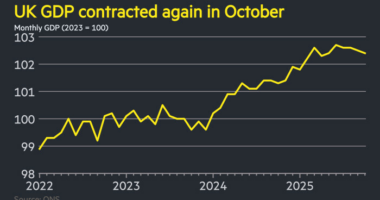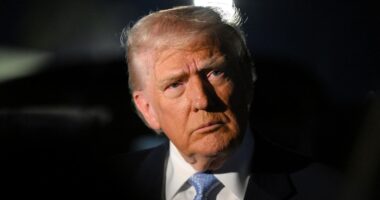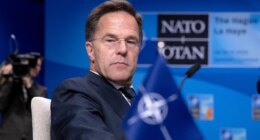Share this @internewscast.com
Stay informed with free updates
China’s manufacturing activity contracted in January for the fourth month in a row, reflecting sluggish momentum in the world’s second-largest economy at the start of the year despite policymakers’ efforts to boost confidence in the recovery.
The country’s official manufacturing purchasing managers’ index released on Wednesday was 49.2 for the month, in line with a median forecast of analysts polled by Reuters and edging up from a reading of 49 in December. A reading below 50 marks a contraction from the previous month.
The non-manufacturing index, which covers services and construction, rose 0.3 points from the previous month to 50.7 — the highest level since September and indicative of “steady expansion”, the National Bureau of Statistics said.
However, analysts said the figures showed that a long-running property downturn, weak export demand and low investor and consumer confidence continued to weigh on the Chinese economy.
“Economic momentum remained muted as the deflationary pressure persists,” said Zhiwei Zhang, president and chief economist of Pinpoint Asset Management.
China has announced a series of measures to support the economy, in particular strengthening credit to stimulate the property sector, infrastructure building and other strategic sectors.
While gross domestic product grew 5.2 per cent last year, exceeding the official target of 5 per cent, that figure was flattered by a low-base effect from the previous year, when coronavirus pandemic lockdowns gripped the country.
The IMF has said China’s stimulus efforts, which include fiscal investment in disaster relief, will improve its outlook this year, and on Tuesday the multilateral lender raised its projection for 2024 growth to 4.6 per cent, up from 4.2 per cent in October.
“The upgrade reflects carry-over from stronger-than-expected growth in 2023 and increased government spending on capacity building against natural disasters,” the IMF said in its World Economic Outlook.
Chinese equities edged lower following the latest weak reading on China’s factory activity, with the CSI 300 index down 0.2 per cent and Hong Kong’s Hang Seng China Enterprises index shedding 1.3 per cent. The gauges are down roughly 6 per cent and 10 per cent, respectively, this year.
China’s NBS said that while large manufacturers reported an expansion of activity in January, medium-sized and small enterprises remained in contractionary territory.
In the non-manufacturing sector, construction activity also continued to expand, but growth slowed significantly, while services edged back into positive territory after a two-month contraction.
The composite index of manufacturing and non-manufacturing sectors was 50.9, up 0.6 from the previous month, “indicating that the overall production and operation activities of the nation’s enterprises continued to expand”, the NBS said.
HSBC wrote in a research note that one bright spot was an acceleration in production activity, which might reflect an improvement in domestic demand, previously a persistent weak point in the economy’s recovery after the pandemic.
The government is expected to set an economic growth target of 5 per cent for 2024 at the annual meeting of its rubber-stamp parliament in March.
But HSBC cautioned that more stimulus would be needed to achieve that goal. “We still see the need for ongoing policy support across multiple fronts, particularly on the fiscal side, to help shore up growth and help revive confidence,” it said.
Pinpoint’s Zhang noted that while China’s fiscal policy stance had become more proactive late last year, “the transmission to the economy has been slow”, possibly reflecting “the lack of suitable infrastructure projects”.
The government has been unwilling to unleash fiscal subsidies to directly boost consumption, and while the central bank has cut the level of reserves banks must hold to try to stimulate demand, real interest rates remain high because of deflationary pressures, deterring investors.
Zhang added that he expected the People’s Bank of China to follow up by cutting interest rates in the first half of 2024.







